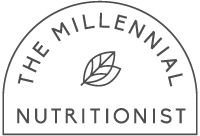How to Make Successful Goals for Weight Loss like a Nutritionist | The Secret that you're Missing
Written By Vanessa Carrillo, BS
Whether you're starting a new project or trying to achieve a personal goal, it's important to have a plan in place. One of the best ways to create a plan that works is by setting SMART goals.
SMART stands for Specific, Measurable, Achievable, Relevant, and Time-bound. By setting goals that meet these criteria, you increase your chances of success and create a roadmap for achieving what you want.
Let's take a closer look at each component of a SMART goal:
Specific: A specific goal is one that is clearly defined and focused. It answers the questions: What exactly do you want to achieve? Why do you want to achieve it? Who is involved in achieving it? Where will it happen?
Example: "I want to write a 50,000-word novel in six months."
Measurable: A measurable goal is one that can be tracked and evaluated. It answers the questions: How will you know when you have achieved your goal? What metrics will you use to measure progress?
Example: "I will track my word count daily and aim to write 834 words per day to reach 50,000 words in six months."
Achievable: An achievable goal is one that is challenging but realistic. It answers the question: Is this goal within my abilities and resources?
Example: "Based on my current writing pace and schedule, it's achievable for me to write 834 words per day to complete a 50,000-word novel in six months."
Relevant: A relevant goal is one that is meaningful and aligned with your values and priorities. It answers the question: Why is this goal important to me?
Example: "Writing a novel is important to me because it's been a lifelong dream and a way to express my creativity and share my stories with others."
Time-bound: A time-bound goal is one that has a deadline. It answers the question: When will you achieve your goal?
Example: "I will write a 50,000-word novel in six months, starting on April 1st and finishing on September 30th."
Now let's apply the SMART criteria to a few common goals:
Example 1: Exercise more
Specific: I want to exercise for at least 30 minutes, five times a week.
Measurable: I will track my workouts in a journal or app.
Achievable: Based on my schedule and fitness level, it's achievable for me to exercise for 30 minutes, five times a week.
Relevant: Exercise is important to me because it improves my physical and mental health.
Time-bound: I will start exercising five times a week on April 1st and continue for the next three months.
Example 2: Drink more water
Specific: I want to drink 8 glasses (64 ounces) of water every day.
Measurable: I will use a water bottle to track my water intake and make sure I am drinking at least 8 glasses of water each day.
Achievable: Based on my daily routine, it's achievable for me to drink 8 glasses of water each day.
Relevant: Drinking enough water is important to me because it helps maintain proper bodily function, improves skin health, and aids in weight loss.
Time-bound: I will start drinking 8 glasses of water each day on March 15th and continue for the next two months. At the end of the two months, I will evaluate how I feel and whether I want to continue this habit.
In conclusion, setting SMART goals is a powerful tool for achieving success. By following the SMART criteria, you create a roadmap that guides you towards your desired outcome, helps you stay focused, and enables you to track your progress. Remember, specific, measurable, achievable, relevant, and time-bound goals increase your chances of success and ensure that you are moving in the right direction towards your goals.
What have you been wanting to work on? Save this post and return to it when you need assistance in structuring your goals.
About the Author
Vanessa Carrillo BS Nutritional Science
Contributing Editor
Vanessa is a Chicago-based community nutritionist. She has a BS in Nutritional Science from Iowa State University.
She enjoys writing about Latino food, trendy health products, and pop culture. She writes, edits, and creates content for The Millennial Nutritionist. If she’s not working, you can find her running with her Husky along Chicago’s lakefront path. Catch more of her on The Millennial Nutritionist Podcast.
